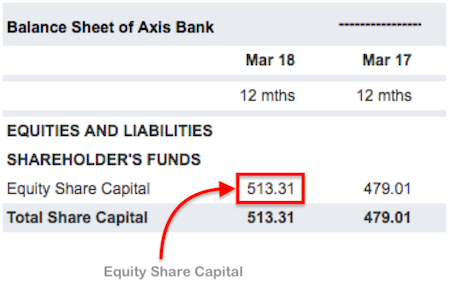英超收官10大悬念 曼市刷史夺冠?萨拉赫争金靴?
曼市第5次捧起联赛杯奖杯。 (伦敦30日综合电)本周末,英超重燃战火,20队为了各自的目标在剩余的8轮联赛展...

If you carry inventory or have accounts payable and accounts receivable, you’ll likely use accrual accounting. This ensures that you have the correct amounts when you’re ready to deduct business expenses on your annual tax return. A chart of accounts is a list of all accounts available for recording transactions in your accounting software program if you use one or a general ledger if you don’t. To create this chart, you’d first organize your accounts into specific categories, then further break your organization down into relevant subaccounts. From payroll taxes to managing invoices, efficient bookkeeping smooths out the process of all your business’s financial tasks and keeps you from wasting time tracking down every dollar. When you start a new business, you need to set up a chart of accounts to journal transactions in any of the five categories including assets, liabilities, expenses, revenue and equity.

The bookkeeper enters relevant data such as date, price, quantity and sales tax (if applicable). When this is when to prepare multiyear financial statements done in the accounting software, the invoice is created, and a journal entry is made, debiting the cash or accounts receivable account while crediting the sales account. Generally speaking, bookkeepers help collect and organize data and may have certain certifications to do so for your business. On the other hand, accountants are generally equipped with an accounting degree and may even be state-certified CPAs. You can expect most bookkeepers to maintain the general ledger and accounts while the accountant is there to create and interpret more complex financial statements. Tracking and reviewing your income and expenses can help you assess the health of your business and plan for future growth.
This means assets like cash, equipment, and inventory (physical), along with intellectual property or patents (nonphysical). If you’re a small-business owner, you’re probably used to doing everything yourself. You’ve used your entrepreneurial prowess to produce a product or service that your customers need. And avoiding spending any money when you think you can just take care of a task yourself is tempting. Using a spreadsheet is the cheapest option, especially if you use Google Sheets rather than Microsoft Excel, which costs a monthly fee.
However, general ledgers can get complicated if you’re trying to juggle multiple accounts. Accountants are members of statutory organizations and registered accountants might call themselves CPAs (Certified Public Accountants) or CAs (Chartered Accountants). They are primarily responsible for preparing statutory returns, advising on legal entity structure and giving general business advice. Creating a budget for expenses like office supplies, inventory and repairs and maintenance can help your business function efficiently.
The value of inventory can significantly impact a company’s financial statements, so accurate tracking and management is vital. Your accounting ledger serves as the hub for all your financial information—in particular, all your accounts and transactions. If you have accounting software, it will manage your ledger for you. QuickBooks Online users have year-round access to QuickBooks Live Expert Assisted to set up the software, then help manage finances. An accounting ledger is a book or system you use for recording and classifying hp pavilion wave 600 financial transactions. To steer clear of accounting blunders, inaccurate tax filings, and overspending, open a separate bank account for business.
Every business, from self-employed freelancers to major global corporations, must perform bookkeeping tasks. Besides recording all income and outgoings, bookkeeping tasks also involve collecting and storing financial information such as receipts, invoices, and bank statements. Modified cash-basis, or hybrid accounting, is a mixture of accrual and cash-basis accounting. Like the cash-basis method, you record income when you receive it, and record an expense when you make a payment. You might choose to use document management software to keep track of key financial information and statements.
One of the best things you can do to ensure your books balance properly is to follow the three golden bookkeeping rules. To uncover errors, check whether you forgot to record an entry in either column of your accounting ledger. Bookkeeping sits within the world of accounting and it’s often seen as the first step of a bigger process. Get up and running with free payroll setup, and enjoy free expert support.
Once you’ve got a handle on how to begin bookkeeping for your small business, it’s time to set yourself up for success with an ongoing bookkeeping system. Your cash flow statement helps you understand how money moves into and out of your business. To prepare a profit and loss statement, first include all the revenue your business made during that period. Finally, subtract your total expenses from your total revenue to get your bottom line. The double-entry bookkeeping method, on the other hand, is usually used by businesses that want to expand or do need more nuanced reporting.
Since the information gathered in bookkeeping is used by accountants and business owners, it is the basis of all the financial statements generated. Most accounting software allows you to automatically run common financial statements such as an income and expense statement, balance sheet and cash flow statement. Business owners or accountants credit andcollections kpis andmetric definitions can then use these statements to gain insight into the business’s financial health. While recording by hand may be the cheapest solution, it can be time-consuming and prone to errors. Bookkeeping is the regular practice of updating a company’s financial records to reflect all financial transactions, credits, and debits. In business, you must keep records of your transactions in your books.
A COA shows you all of the money going into your business as well as all of the money going out. Accounting software is the best of both worlds when it comes to difficulty and cost. Accounting software is a good option if you want to streamline accounting processes and save time without having to pay the price of having an accountant do everything for you. Not to mention, you don’t have to worry about calculating totals yourself since the software handles it for you. The disadvantage, though, is that outsourcing means your business’s financial information is being viewed by someone else, which you may or may not be comfortable with.